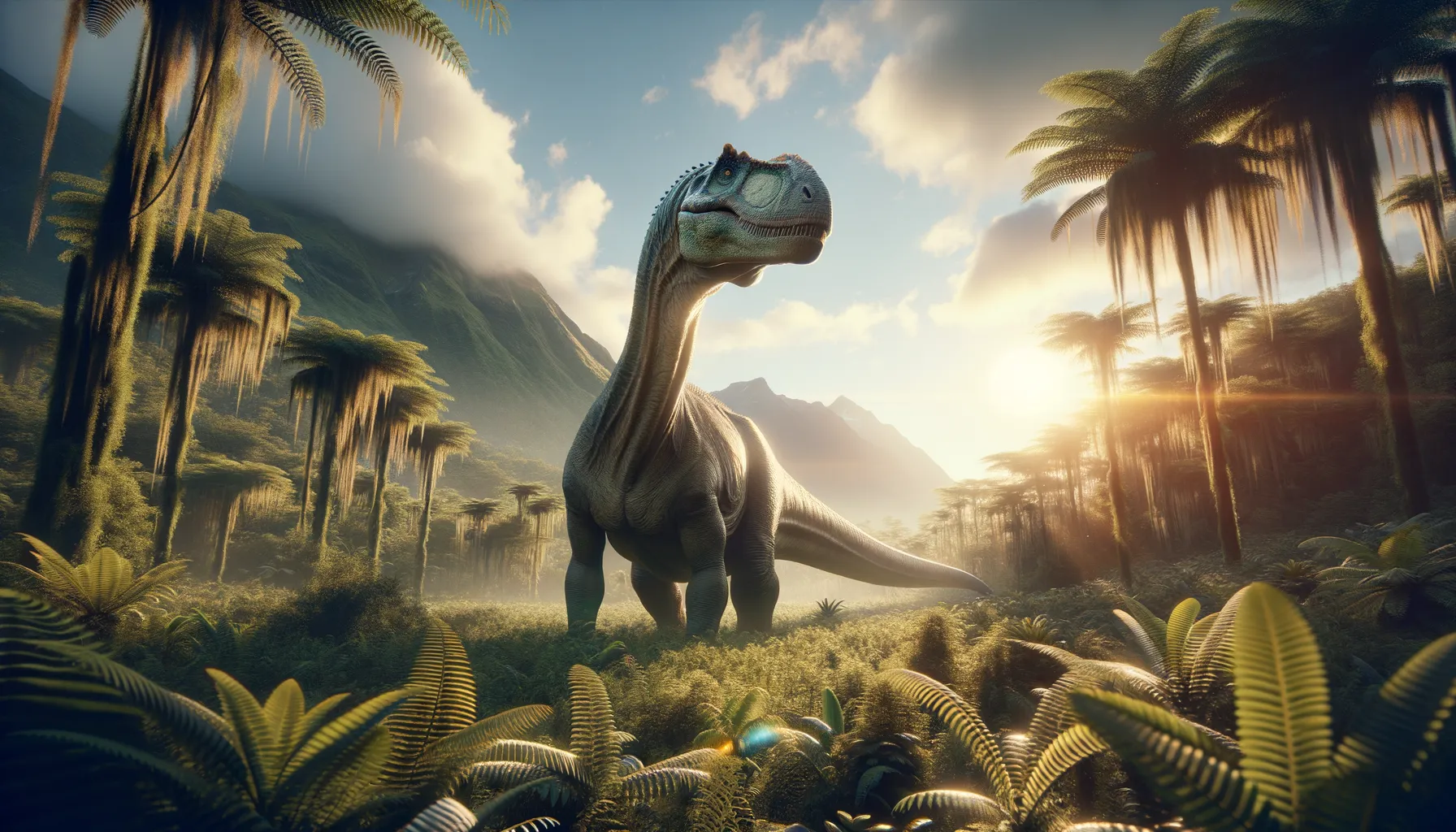
Limaysaurus
Graceful giant of the dinosaur era.
Period
Cretaceous
Length
About 15 meters from head to tail.
Height
Approximately 3.5 meters at the shoulder.
Weight
Around 15 to 20 tons.
Limaysaurus was a massive sauropod dinosaur that roamed South America during the Cretaceous period. Known for its long neck and herbivorous diet, this giant creature was well-suited to feeding on high vegetation in the lush environments it inhabited. Its discovery in Argentina has provided valuable insights into the diverse dinosaur fauna of that era, contributing significantly to our understanding of sauropod evolution.
Diet
Limaysaurus was an herbivore, feeding primarily on plants. Its long neck allowed it to reach high vegetation, such as leaves and branches of tall trees.
Hunting
As a plant-eater, Limaysaurus did not hunt for prey. Instead, it spent its days foraging for food among the abundant vegetation of its time.
Environmental challenges
Limaysaurus faced challenges from predators, which it likely avoided through its large size and possibly living in groups. It also had to contend with changes in climate and vegetation, which could affect its food sources. Additionally, competition for resources with other herbivorous dinosaurs would have been a constant challenge.
Speed
Slow-moving due to its massive size.
Lifespan
Estimated to live for several decades.
First discovery
Discovered in Argentina in 1995.
Fun Facts
- Limaysaurus was a long-necked, plant-eating dinosaur that lived about 100 million years ago during the Cretaceous period.
- Fossils of Limaysaurus have been found in South America, specifically in Argentina, where it roamed ancient floodplains.
- It belonged to a group of dinosaurs known as sauropods, which are famous for their enormous size and long necks.
- Limaysaurus could grow up to 50 feet in length, making it a gentle giant of its time.
- Despite its massive size, Limaysaurus had a relatively small head compared to the rest of its body.
- Its teeth were spoon-shaped and designed for stripping leaves off branches, indicating a herbivorous diet.
- The name Limaysaurus means 'Limay lizard,' named after the Limay River near where its fossils were discovered.
Growth and Development
Limaysaurus experienced significant growth after hatching, likely growing several meters in its first few years. Like other sauropods, it had a rapid growth rate, reaching its massive size relatively quickly. This rapid growth may have helped it evade predators, as larger size offered better protection.
Habitat
Limaysaurus lived in what is now South America, in areas that were likely rich in vegetation. It inhabited forests and floodplains where water and food were abundant. The environment provided shelter and resources necessary for its survival and the sustenance of large populations.
Interaction with other species
Limaysaurus interacted with a range of other species, including other herbivorous dinosaurs and various predators. It might have lived alongside other sauropods, possibly forming mixed herds. These interactions were crucial for behavior like defense against predators and competition for food.
Natural lifespan
Limaysaurus likely lived up to 70 years in the wild.
Reproduction
Reproduction was likely oviparous, with females laying eggs in nests. The nests might have been partially buried to protect the eggs from predators. Parental care, if any, might have been minimal, with hatchlings quickly learning to fend for themselves.
Social behaviour
Limaysaurus may have been social, living in herds that provided protection. Such herds could form migratory patterns, following food sources as needed. These social structures were advantageous in the vast, open environments they traversed.
Fossil locations
Limaysaurus fossils have been predominantly found in Patagonia, Argentina. These discoveries have been pivotal in understanding the distribution of sauropods in South America. The sites have yielded well-preserved remains, offering insights into their anatomy and lifestyle.
